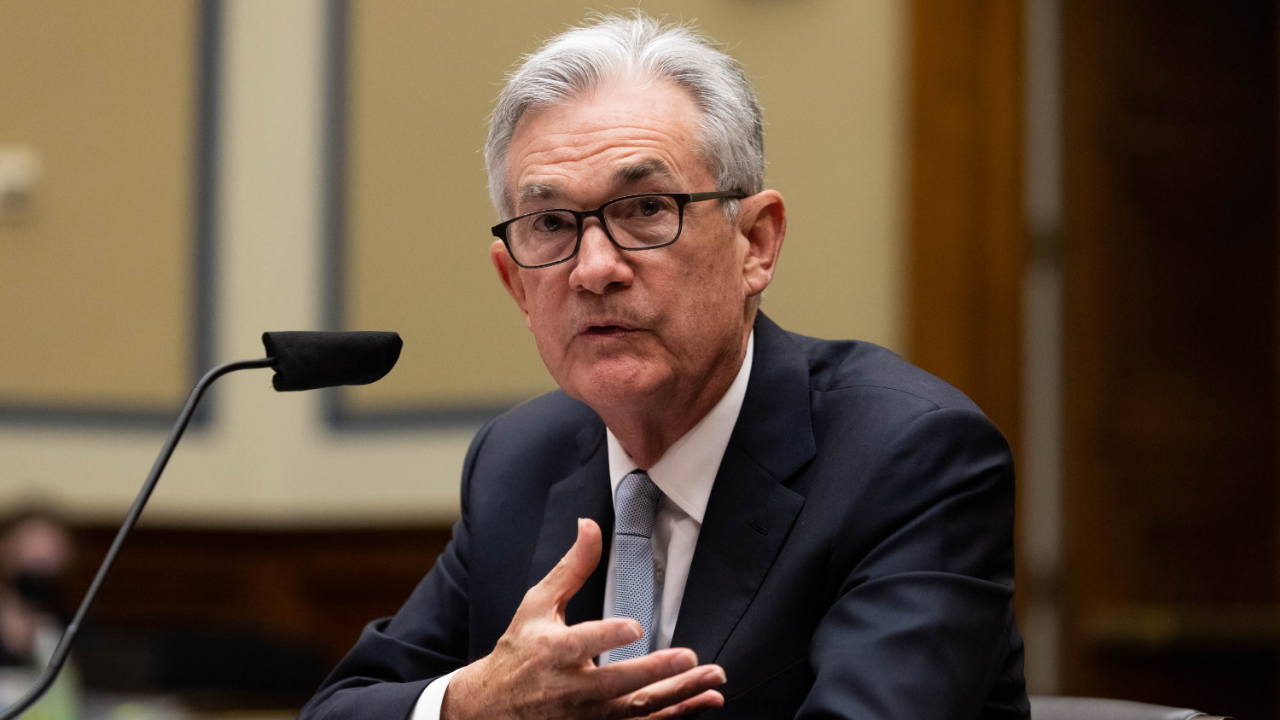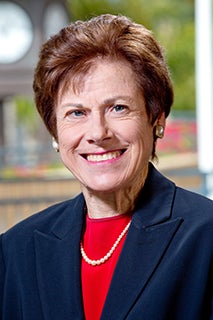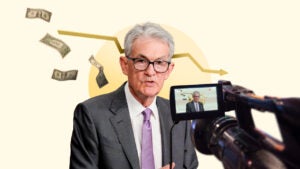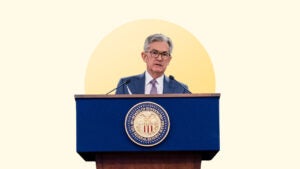Survey: Increasing number of top economists now expecting Fed rate hike over coming year

The U.S. economy’s sharp rebound from the pandemic that sent inflation soaring to its highest in decades might push up interest rates over the next year, according to a new survey from Bankrate.
Experts see the 10-year Treasury yield climbing to 1.9 percent a year from now, according to the average forecast in Bankrate’s Third-Quarter Economic Indicator poll. Meanwhile, the majority of experts (63 percent) say the Federal Reserve will keep interest rates at rock bottom over the next 12 months, though that’s the smallest majority since the coronavirus pandemic began.
The U.S. central bank influences interest rates on auto loans and credit cards to savings accounts to certificates of deposit (CDs), while mortgage rates are directly tied to the 10-year Treasury yield.
This article is the second in a four-part series analyzing findings from Bankrate’s Third-Quarter Economic Indicator poll. We asked experts where they see the job market, unemployment, the Federal Reserve, the 10-year Treasury yield and inflation heading over the next 12 months. We also polled experts on the balance of risks facing the U.S. economy and what’s currently keeping them up at night.
Growing sentiment for higher rates in the next 12 months
While most experts see the Fed holding rates steady over the next year, nearly a third (or 32 percent) are bracing for a rate hike. That sentiment has grown since previous iterations of Bankrate’s indicator poll, with 28 percent of experts in the second quarter and 19 percent of experts in the first quarter expecting a Fed rate hike. Back in the fourth quarter of 2020, no economist saw U.S. central bankers hiking interest rates within the next 12 months.
Expectations for a rate hike are also picking up within the Fed itself. Half of U.S. central bankers in projections from their September meeting penciled in an increase for 2022, up from seven in June and four in March. Meanwhile, just one official penciled in rates to hold steady for 2023, according to those most recent projections.
The recent pace of rapid price gains is no doubt altering those expectations for monetary policy. For the past five months, consumer prices have risen at the fastest pace in 13 years, according to the Department of Commerce. Another measure of inflation that’s preferred among Fed officials rose in July by the quickest rate since the 1990s.
Coupled with the U.S. economy expanding back to its pre-pandemic size and a labor market with record demand for workers, those conditions are giving the Fed more of a reason to withdraw support sooner rather than later, experts say.
“The Federal Reserve is data-dependent, and as long as the labor market and broader economic recovery remains on track there is reason to believe a rate hike may be in the future for 2022,” says Odeta Kushi, deputy chief economist at First American Financial Corp., who predicts that the Fed’s next move over the next 12 months will be to raise interest rates.
Economists who see the Fed leaving interest rates alone foresee U.S. central bankers preferring to give the labor market more time to heal from pandemic-related disruptions, while the U.S. economy might need more juice as its sugar high from the record levels of monetary and fiscal stimulus wears off.
“With the delta wave slowing the recovery and inflation probably starting to drop next year, the Fed will have little motivation to raise rates and risk cooling the economy,” says Robert Frick, corporate economist at Navy Federal Credit Union, who sees the Fed holding interest rates in its current target range of 0-0.25 percent for the next year.
One respondent didn’t provide a Fed forecast.
What to expect from mortgage rates
But before the Fed starts to lift interest rates, many are expecting a slow down to how many bonds it’s buying first — moves that have helped send mortgage rates to record lows during the pandemic. The Fed has been purchasing $120 billion worth of Treasury and mortgage-backed securities each month, but said at its September meeting that a slowdown in the pace of that bond-buying could “soon” be warranted.
Once the Fed steps away from bond-buying, the 10-year Treasury rate could rise. The yield has already been on a tear, rising 56 basis points since 2021 began thanks to rising inflation and the recovery from the pandemic.
Analysts expect those increases in the 10-year Treasury yield to continue. Just two respondents see the benchmark yield holding at or below 1.5 percent, which would be lower than where the interest rate closed on Sept. 28, when the third-quarter polling period closed. Meanwhile, nine respondents (reflecting 47 percent of economists in the survey) see the 10-year holding at 2 percent or above, which would be the highest since July 2019.
While mortgage rates aren’t guaranteed to soar once the Fed tapers and the 10-year Treasury yield increases, experts say Americans might want to prepare for a modest increase as the Fed starts to back away from its easy-money policies.
“The very first move will nudge up mortgage rates as the tapering of MBS (mortgage-backed securities) starts by the year end,” says Lawrence Yun, chief economist at the National Association of Realtors.
What the experts are saying
— Lynn Reaser, chief economist, Point Loma Nazarene University

The Fed will be gradually tightening monetary policy over the next year by cutting its monthly purchases of Treasuries and mortgage-backed securities. By the fourth quarter of next year, look for the first rate hike, with a quarter-percentage-point boost in the federal funds rate target.
— Mike Englund, chief economist, Action Economics

The Fed will seek to delay tightening as long as markets allow. Until we see a rise in inflation fear, the Fed will likely kick the tightening can down the road.
What to do with your money
Americans should take steps with their finances now, while interest rates are low, to prepare for when the Fed eventually walks back it’s COVID-19-based accommodation.
- Pay down high-cost debt: If you have credit card debt, you’ll want to focus on eliminating your overhanging balance now, while interest rates are low. Analyze how much you would save in interest if you transfer your debt to a balance-transfer card.
- Don’t miss your chance to refinance: Homeowners haven’t yet missed out on their chance to score a better mortgage rate.
- Invest with a long-term mindset: Don’t overreact to markets that might be choppy as the Fed withdraws its extraordinary levels of support.
Methodology
The Third-Quarter 2021 Bankrate Economic Indicator Survey of economists was conducted Sept. 20-28. Survey requests were emailed to economists nationwide, and responses were submitted voluntarily online. Responding were: Scott Anderson, executive vice president and chief economist, Bank of the West; Scott J. Brown, chief economist, Raymond James Financial; Ryan Sweet, director of real-time economics, Moody’s Analytics; Gregory Daco, chief U.S. economist, Oxford Economics; Mike Fratantoni, chief economist, Mortgage Bankers Association; Yelena Maleyev, associate economist, Grant Thornton LLP; Lynn Reaser, chief economist, Point Loma Nazarene University; Odeta Kushi, deputy chief economist, First American Financial Corp.; Robert Frick, corporate economist, Navy Federal Credit Union; Bill Dunkelberg, chief economist, National Federation of Independent Business; Mike Englund, chief economist, Action Economics; Gus Faucher, chief economist, PNC Financial Services Group; Bernard Markstein, president and chief economist of Markstein Advisors; Danielle Hale, chief economist, Realtor.com; Dan Manaenkov, head of national forecasting, University of Michigan; Lawrence Yun, chief economist, National Association of Realtors; Christopher Russo, postgraduate research fellow, Mercatus Center at George Mason University; and Tenpao Lee, professor emeritus, Niagara University.
Why we ask for feedback Your feedback helps us improve our content and services. It takes less than a minute to complete.
Your responses are anonymous and will only be used for improving our website.






